| Be sure to scroll down to download your free customer journey mapping template! |
Think about the last time you had a seamless experience with a brand. From the moment you discovered them to the point you became a loyal fan, every interaction felt effortless. That’s how a well-crafted customer journey is. But how do you create that kind of experience for your own customers?
Through customer journey mapping. It’s a strategic tool that helps you visualize and understand every step your customers take, uncovering their thoughts, feelings, and pain points along the way.
In this guide, we’ll walk you through everything you need to create an effective customer journey map, including templates and practical tips to enhance the mapping process.
Key Takeaways First
- Customer journey mapping creates a visual representation of the entire customer journey, highlighting interactions and pain points to increase customer satisfaction.
- Key components include customer journey touchpoints, target customer personas, sentiment analysis, and customer pain points, each contributing to a deeper understanding of customer experiences.
- Creating effective customer journey maps involves setting clear objectives, mapping key touchpoints, and continuously validating and updating the maps based on feedback when you survey customers.
- The customer journey begins with awareness and continues through the customer lifecycle, making it essential to map every stage where a customer interacts with your brand.
- Most customer journey maps help businesses align their sales team and customer service representatives around a shared vision of the buyer’s journey.
What Is a Customer Journey Map?
A customer journey map visually depicts the entire customer experience with your brand. From initial awareness to post-purchase engagement, it captures every interaction, emotion, and pain point of an average customer along the way. By seeing your brand through your customers’ eyes, you can identify critical opportunities for improvement.
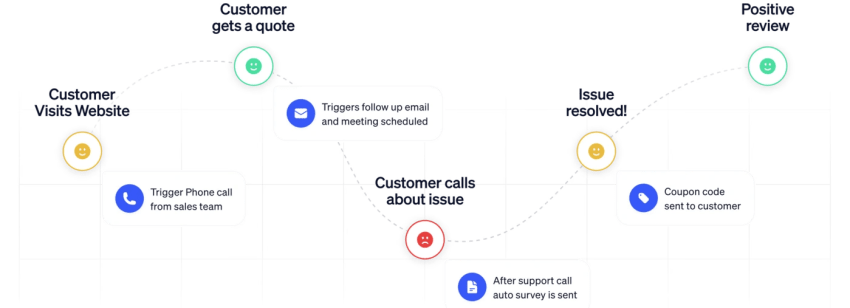
When you create a customer journey map, you discover what your customers want, need, and struggle with. This understanding enables strategic business adjustments that directly address customer frustrations and enhance their experience.
Every touchpoint matters — advertisements, social media encounters, customer service interactions, and in-store experiences. By mapping these moments, businesses pinpoint exactly where customers feel delight or friction. This insight not only improves conversion rates but creates satisfied customers and drives customer loyalty.
An accurate customer journey map will guide your business to better results by showing where to focus your improvement efforts to drive sustainable growth and customer success.
Key Components of a Customer Journey Map
A comprehensive customer journey map shows the complete customer experience based on several essential elements:
Customer personas and touchpoints
Every interaction between customers and your brand — from advertisements and social media to in-store visits and website interactions — represents a touchpoint. Mapping these connections and target customer personas gives the complete picture of customer experiences and highlights any overlooked interactions or gaps in service.
When you create customer personas, ensure they accurately represent your target audience to make your journey mapping more effective.

Actions and emotional journey
Understanding what customers do is only half the story. Tracking how they feel at each stage gives crucial insights about their experience. Mapping emotions pinpoints moments of frustration or delight that might otherwise remain hidden.
This emotional dimension is important in a life customer journey map that shows how customers interact with your brand throughout different life stages.
Pain points and customer’s voice
Identifying specific challenges customers face lets you prioritize improvements where they matter most. Capturing customer experiences in their own words adds authenticity and depth to your map, ensuring solutions address real rather than assumed problems.
When you step into your customers’ shoes through effective journey mapping, you gain clarity about their experiences and can make targeted improvements that meaningfully enhance their relationship with your brand.
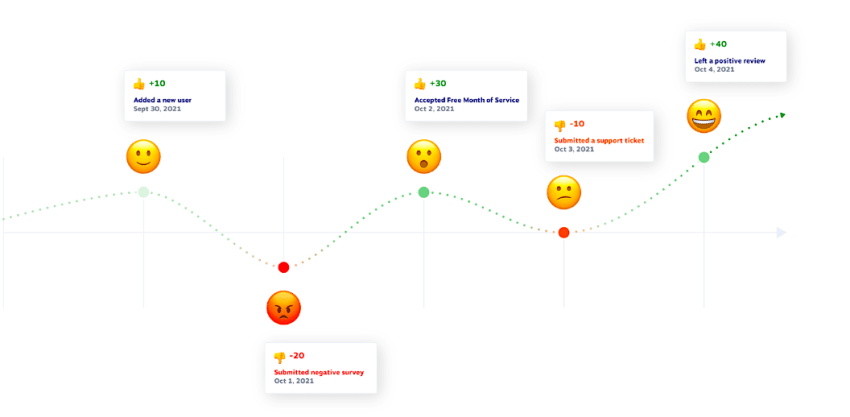
4 Types of Customer Journey Maps
Different customer journey maps serve different strategic purposes and help companies understand and improve the customer experience.
1. Current-state journey maps
These maps capture how customers interact with your business today, highlighting critical service gaps and pain points. A current state customer journey map documents customer actions, feelings, and touchpoints, providing a clear picture of the existing experience and showing exactly where improvements will have the greatest impact.
2. Day-in-the-life maps
Going beyond direct brand interactions, these maps illustrate a customer’s typical daily activities and emotional states. Understanding how your product fits into their broader life context shows insights into stressors and challenges that might not be evident through business-focused analysis alone.
3. Future-state journey maps
These forward-looking maps visualize the ideal customer experience you aim to deliver. They illustrate your vision for enhanced customer interactions, providing clear direction for product development and service improvements while aligning your customer service team around concrete strategic goals.
4. Service blueprint maps
Blueprint maps connect customer-facing touchpoints with the internal processes and systems that power them. They visualize the relationship between frontend experiences and backend operations, help identify root causes of customer friction, and prioritize internal process improvements.
Each map type requires specific data sets and has distinct business objectives. Choose the right approach for your current strategic needs.
Here are some customer journey map examples and how to create and optimize your own.

How to Create an Effective Customer Journey Map
Effective journey maps integrate customer personas, touchpoints, thoughts and actions, pain points, and emotional states to create a comprehensive view of the customer experience. Let’s look at the key steps in a customer journey mapping process.
Set clear objectives
Begin by defining precisely what you want your journey map to accomplish. Align your mapping objectives with broader business goals and key performance indicators (KPIs) to ensure the exercise delivers meaningful results. Recognize that as you uncover new insights, your focus may evolve, leading to multiple journey maps that address different aspects of the customer experience.
Identify customer personas
Develop detailed personas based on actual customer data and interviews, not assumptions. Each persona should capture key goals, needs, struggles, and tasks that drive customer behavior. For diverse audiences, create separate journey maps tailored to different demographic segments to ensure accuracy in representing varied user experiences.

Map customer touchpoints
Document every customer interaction with your brand, from the first ad impression to the purchase, and beyond. Include both existing touchpoints and desired future interactions to identify customer experience gaps. Focus on understanding the complete progression from first contact to final purchase, seeing how customers naturally move through your buying journey.
Build and validate the map
Create a comprehensive map that captures customer actions, needs, pain points, emotional states, and all touchpoints. Design your map to be flexible, allowing it to evolve as you gather new insights. Test your journey map against real customer experiences to see subtle customer issues.
Always continuously refine your map using customer journey analytics data and direct customer feedback. Evaluate each element by asking: Is it feasible to implement? Is it viable for the business? Does it address customer desires? This validation process makes creating customer journey maps an ongoing effort rather than a one-time project.
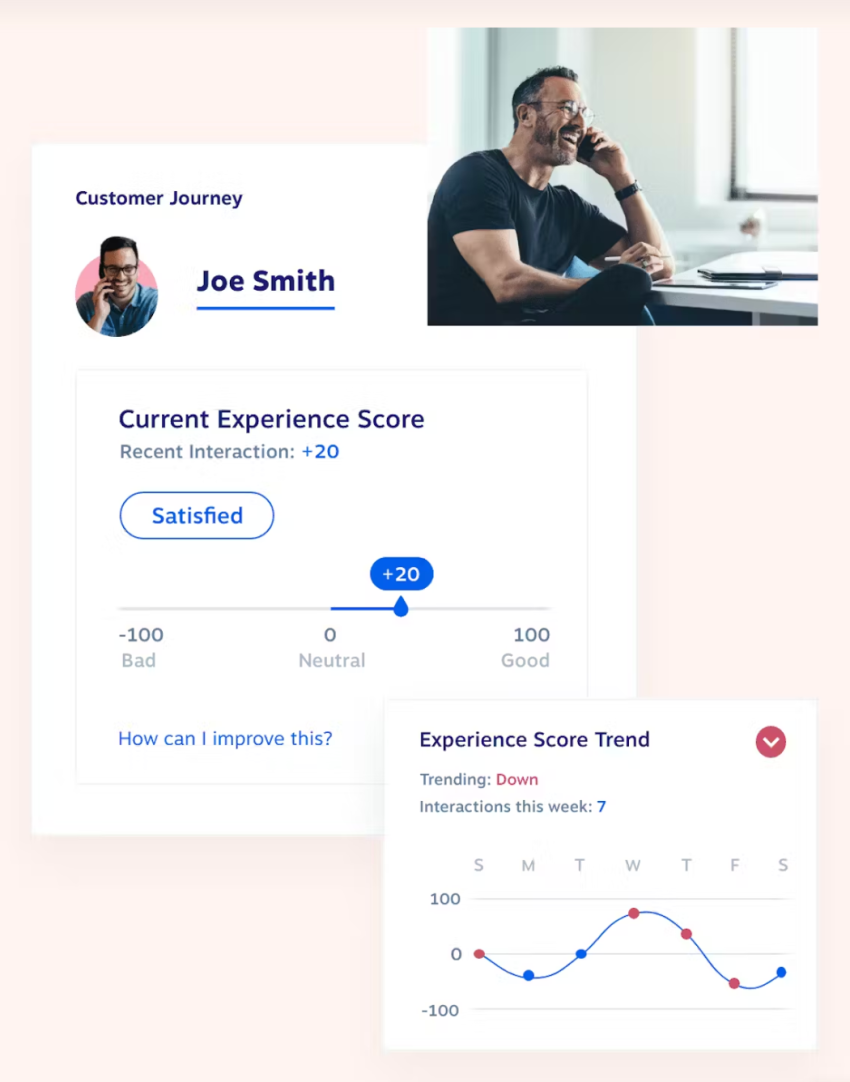
Using Data to Enhance Your Customer Journey Map
To create the right customer journey map, you need multiple data sources and combine them to create a comprehensive picture that captures not only what customers say, but also what they actually do.
Solicited data is the voice of the customer. Customer surveys, interviews, and focus groups provide direct insights into customer experiences, pain points, and product usage patterns. These structured inputs tell what customers consciously recognize about their journey and are willing to share when asked directly.
Unsolicited data shows behavior beyond words. Behavioral analytics, social media listening, and customer service interactions capture what customers do naturally, without the constraints of formal questioning. This unfiltered data often shows patterns and pain points that customers themselves might not articulate or recognize.
When you integrate both data types, you discover powerful insights that neither could provide alone. A comprehensive approach highlights previously overlooked aspects of the customer journey and prevents mapping based on assumptions rather than evidence.
While using customer journey analytics, focus your research questions on emotional responses and friction points during critical interactions. This emphasis on feelings — not just actions — shows the deeper motivations driving customer behavior and helps you prioritize improvements with the greatest impact on customer satisfaction.

Benefits of Customer Journey Mapping
Customer journey mapping changes how businesses understand and respond to customer needs, offering great benefits in many areas.
1. Improved customer experience
Journey maps reveal both pain points and opportunities, so you can visualize the emotional journey customers take — from frustration to delight — and strategically enhance satisfaction at critical moments. These emotional insights, combined with behavioral data, create powerful opportunities to strengthen customer engagement and loyalty.
When you organize customer feedback within the context of their overall journey, you get clarity about which improvements will have the greatest impact. This approach helps make enhancements based on customer needs rather than internal assumptions.
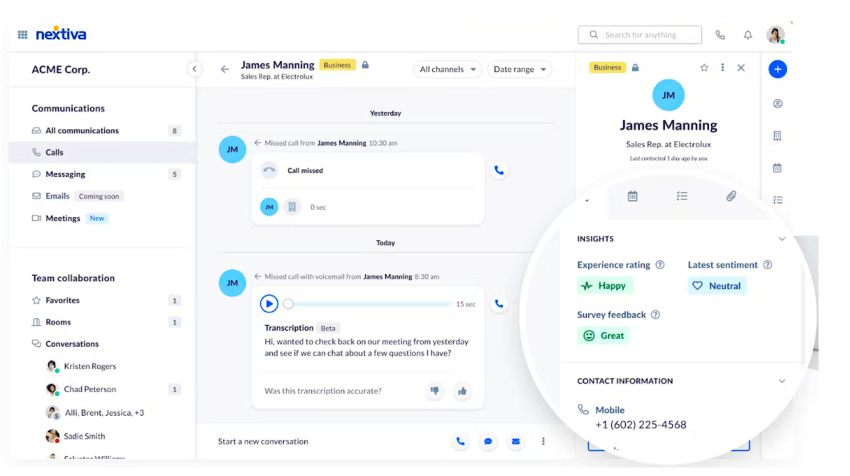
2. Increased customer retention
A well-crafted journey map offers a clear view of customer behaviors and preferences across their entire relationship with your brand. Analyzing data from each customer journey stage ensures your offerings align with evolving customer expectations.
The impact of these insights can be substantial. Customer service statistics show that even a modest 5% increase in customer retention can boost profits by 25%-95%. Simple post-purchase actions identified through journey mapping such as personalized thank-you messages or thoughtful feedback requests, make the difference between one-time buyers and loyal customers.
3. Enhanced team collaboration
Creating an effective journey map requires diverse perspectives. When team members from different departments collaborate on mapping the entire customer journey, they develop a shared understanding of customer experiences that transcends departmental boundaries.
Making your customer journey map accessible to all teams aligns everyone around the customer’s perspective, breaking down silos and creating a customer-centric culture. When your sales rep and customer service reps share the same understanding of customer needs, they can provide a more consistent experience.
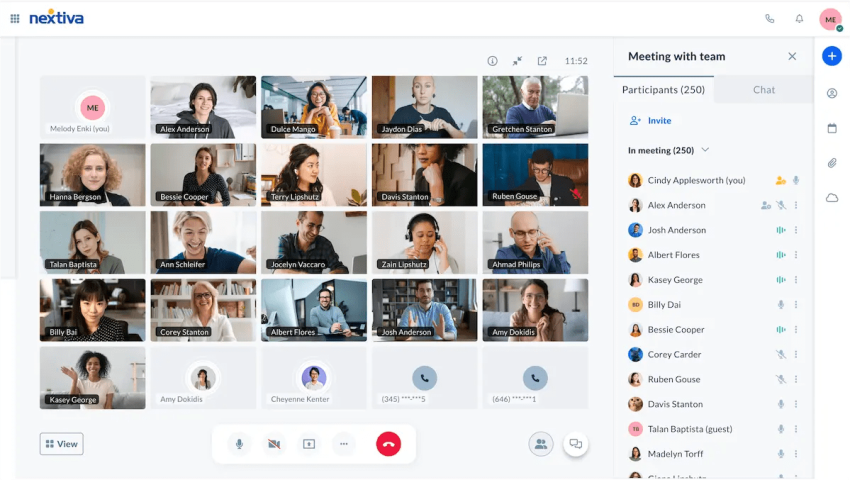
Common Challenges in Customer Journey Mapping
When journey mapping, you’ll come across many obstacles that can undermine your business value if not properly addressed:
Data fragmentation
Critical customer experience insights often exist in isolated departmental silos — marketing data separate from sales intelligence, disconnected from support metrics. This fragmentation complicates constructing a complete customer journey, leaving important connections undiscovered.
Oversimplification
Customer experiences rarely follow linear, predictable paths. Journey maps that reduce complex, multi-channel interactions to simplified flowcharts risk missing crucial nuances in customer behavior and decision-making processes.
Assumption-based mapping
When journey maps are created without direct customer input, they inevitably reflect internal assumptions rather than actual customer experiences. These assumption-driven maps may appear comprehensive while missing the very pain points they were designed to identify.
Static documentation
Customer expectations and behaviors evolve, yet many organizations treat journey maps as one-time projects rather than living documents. Without regular updates, journey maps quickly become outdated representations of past customer experiences.
Cross-functional alignment
Creating comprehensive journey maps requires input from every department. When teams work in isolation, journey maps develop blind spots that make them ineffective.
Overcoming these challenges requires a commitment to customer-centric culture, cross-departmental collaboration, and establishing processes for refreshing journey maps with new insights.
Tools and Software for Customer Journey Mapping
The right journey mapping tools turn complex customer data into key insights through powerful visualization and collaboration capabilities. Here are some customer journey mapping tools and software you could use along the way:
Journey analysis platforms
Specialized journey mapping software identifies and analyzes critical touchpoints across communication channels. These platforms integrate multiple data sources to provide the complete customer experience, highlighting patterns hidden in siloed data.
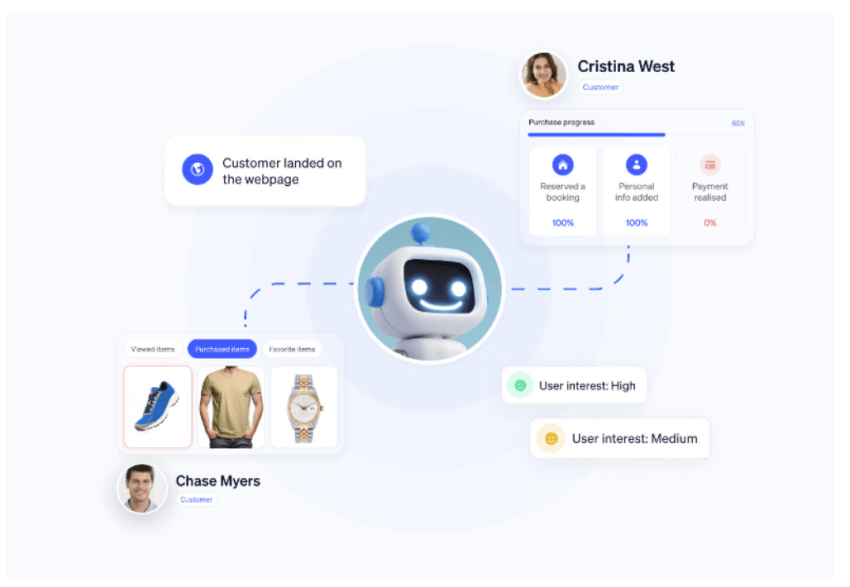
Visualization solutions
Advanced visualization tools translate complex customer journeys into intuitive flowcharts, diagrams, and interactive maps. The best solutions offer drag-and-drop interfaces paired with rich visual elements that communicate emotional states and pain points at a glance.
Collaborative features
Modern journey mapping platforms enable real-time collaboration across departments, allowing diverse team members to contribute insights simultaneously. This collaborative approach makes maps reflect the full breadth of organizational knowledge about the customer experience.
Visual communication elements
Strategic use of icons, symbols, and color-coding creates immediate visual impact without relying on excessive text. These visual shortcuts help stakeholders quickly identify critical moments in the customer journey, emotional states, and opportunities for improvement.
When selecting journey mapping tools, prioritize customer experience tools. These software typically offer everything you need to keep your customer experience on track while offering key mapping capabilities. Make sure they align with your business objectives, technical requirements, and team collaboration needs.
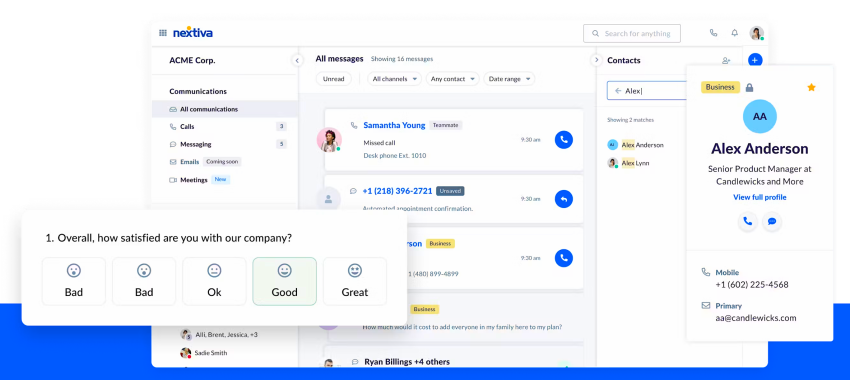
Customer journey map design should balance sophisticated analysis capabilities with intuitive interfaces that make journey insights accessible throughout your organization.
Best Practices for Maintaining Customer Journey Maps
Journey maps deliver value only when they evolve alongside changing customer behaviors and business offerings. Implement these practices to keep your maps relevant and actionable:
1. Use customer feedback to update
Treat journey mapping as an ongoing process rather than a one-time project. Survey customers and incorporate fresh customer insights to align your maps with evolving needs and customer expectations. Establish systematic feedback loops that bring new customer experiences directly into your mapping process.
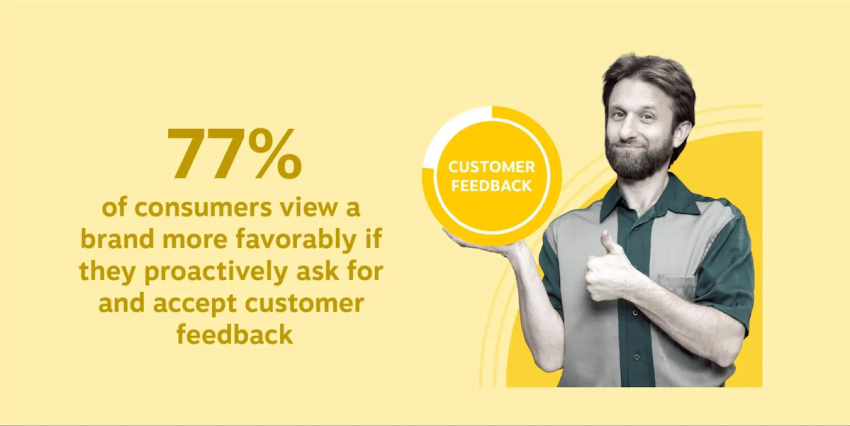
2. Designate ownership and make maps accessible
Assign specific responsibility for maintaining journey maps to ensure they remain current and accessible. Ownership keeps updates happening consistently and all stakeholders are aware of where to find the latest version. Create clear documentation to help everyone understand how to interpret and use the maps effectively.
3. Cover the map comprehensively
Map not just major touchpoints but also the crucial transitions between them, where critical customer decisions occur. These “in-between” moments show unexpected pain points or opportunities that might be overlooked.
4. Collaborative review sessions
Schedule regular cross-functional meetings to discuss new products, features, or service changes and their impact on the customer journey. Collaborative sessions ensure that journey maps reflect the complete customer experience across all departments.
Customer Journey Map Templates
Creating customer journey maps from scratch is tiresome. But plenty of mapping templates got you. The right template accelerates your journey mapping process while ensuring consistency and completeness:
Template types
Different business goals require different mapping approaches. Choose templates designed for your goals, whether mapping current experiences, designing future states, or building deeper customer empathy. Customer journey mapping examples can inspire your own mapping efforts.
Customization options
Platforms like Canva offer highly customizable templates tailored to your brand identity and information needs. These visual frameworks organize complex journey information into clear, actionable insights.
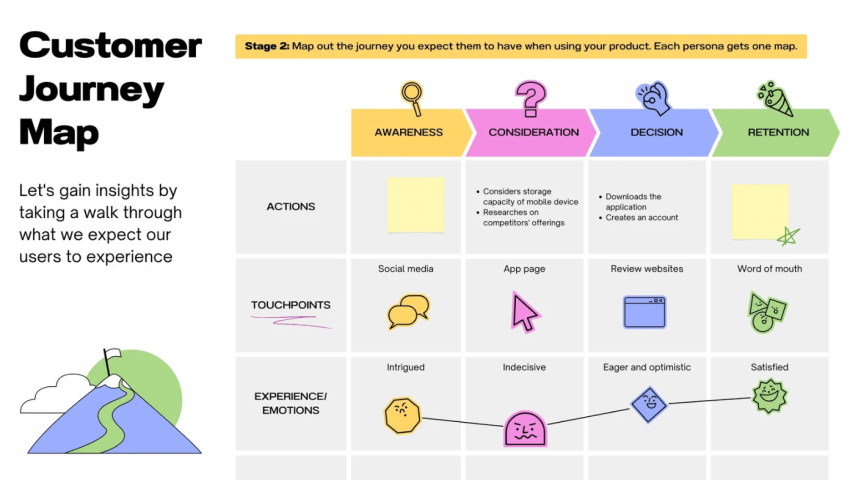
Visual organization
Well-designed templates ensure consistent visual representation of touchpoints, emotions, and pain points across multiple journey maps. This visual consistency makes patterns and opportunities more immediately apparent to all stakeholders.
UX journey mapping templates often include additional elements focused on digital interactions, which complement traditional customer journey maps with insights specifically relevant to website and app experiences.
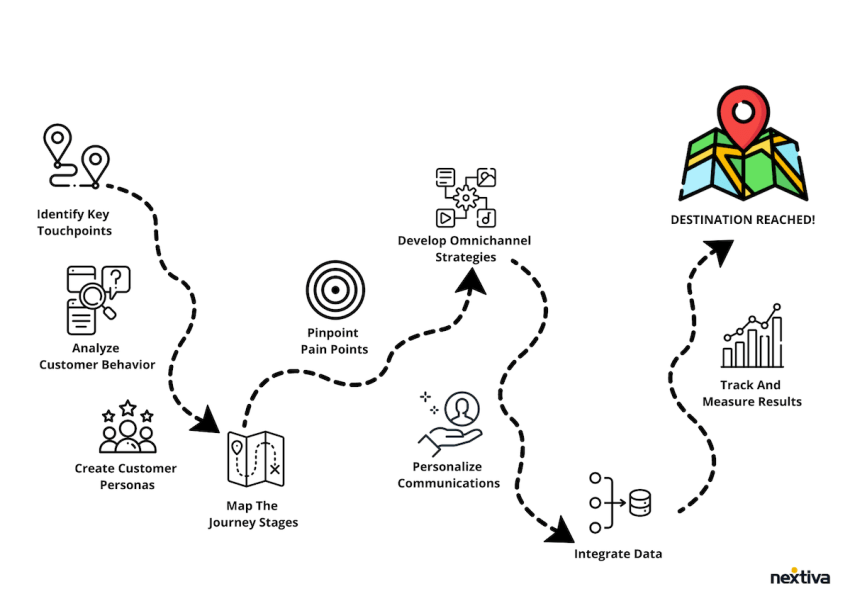
Get a free template from HubSpot.
Customize your own using this journey mapping template.
Via HubSpot
Improve Your Customer Journey With Nextiva
We’ve covered a lot of ground, from understanding a customer journey map to exploring different types and best practices. Now, it’s time to act and implement the map in your daily operations.
Don’t just map the journey, own it! With tools like Nextiva’s Journey Builder, you have the power to turn insights into action and get your customer experience to new heights.
Free templates are a great starting point, but for deeper insights and advanced features, a dedicated customer journey mapping tool helps a great deal.
Nextiva’s Journey Builder is a power-packed tool that visualizes your customer journey and gives you deep insights into customer experiences.
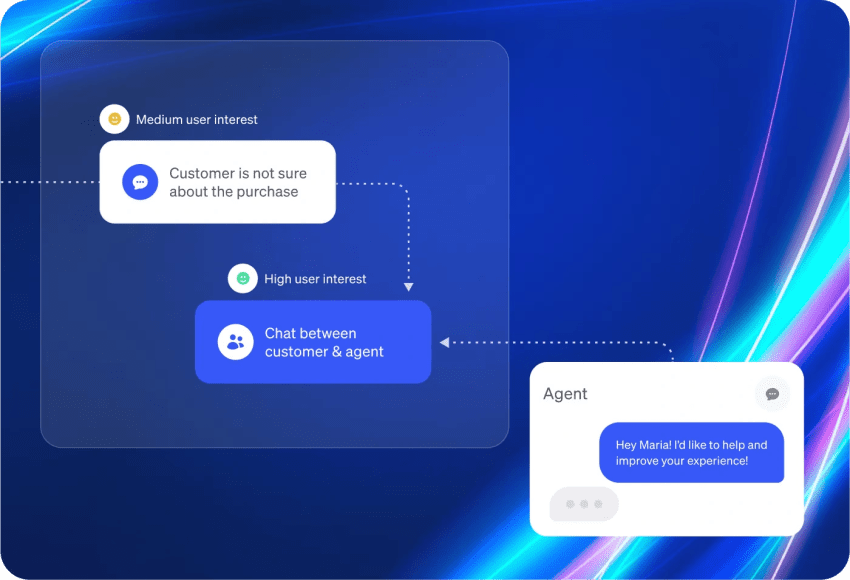
With Nextiva, you can:
- Visualize the complete customer journey
- Analyze cross-channel interactions
- Identify customer pain points and opportunities
- Personalize experiences for each customer segment
- Track the impact of your improvements on customer satisfaction and revenue
The CX platform customers love
Sales and support teams rely on Nextiva to deliver the best customer experience.
Customer Journey Mapping FAQs
A customer journey map shows the customer’s perspective on your brand and identifies opportunities for improvement that increase satisfaction and loyalty. Customer journey mapping aligns your organization around the customer experience, uncovers hidden pain points, and helps prioritize improvements with the greatest impact. It enables both customer service representatives and sales reps to understand the complete context of customer interactions.
Create your map by defining clear objectives, researching customers, developing target customer personas, identifying all touchpoints, mapping the current journey with actions and emotions, adding metrics, analyzing pain points, designing an improved future state, creating an implementation plan, and sharing it organization-wide. For best results, involve diverse perspectives from your sales team and customer service team when mapping the entire customer journey.
A user journey map typically focuses on digital interactions and usability within specific products or interfaces, often used in UX design. A customer journey map covers the broader relationship including offline touchpoints throughout the customer lifecycle. For digital products, UX journey mapping provides deeper insight into online experiences, while comprehensive customer journey maps show how these digital touchpoints fit into the overall relationship with your brand.
Track customer service metrics before and after implementing journey map insights, including conversion improvements, support ticket reduction, increased customer lifetime value, and higher NPS scores. Effective customer journey design leads to increased conversion rates, higher customer loyalty, more efficient operations, and greater profitability. Even a modest 5% increase in customer retention can boost profits by 25%-95%.
For small businesses, start with a simplified approach focused on your most important customer segment using readily available data from customer interactions. Rather than creating separate maps for each channel, develop an omnichannel view showing how customers move between touchpoints. This highlights transition points and ensures consistent experiences whether a customer interacts with your website, physical store, or customer service reps. Make your customer journey map accessible to all team members to maximize its impact.

















 Customer Experience
Customer Experience 










